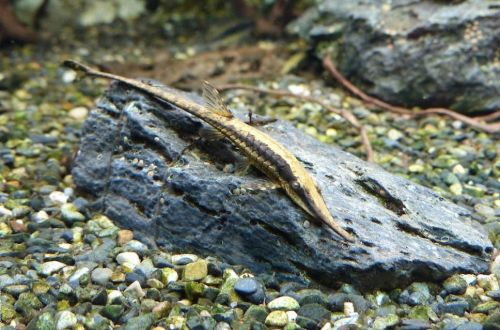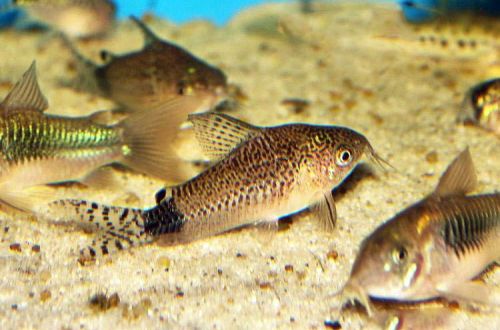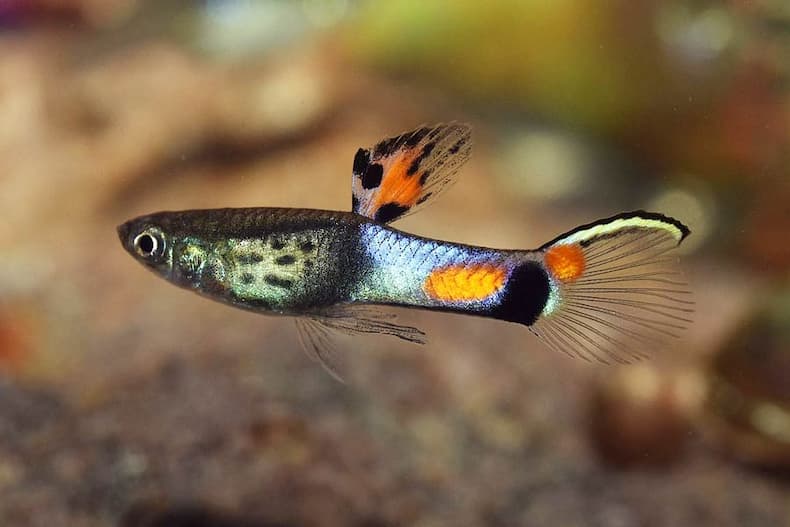
Guppy Endler
Endler’s Guppy, scientific name Poecilia wingei, belongs to the Cyprinodontiformes family. Moving bright fish. Easy to keep and breed. All this makes it a good choice for the beginner aquarist. Due to its high fecundity and unpretentiousness to the habitat, it is considered by many as a good source of permanent live food for predatory species.

Contents
Habitat
Native to South America from the northern part of Venezuela. Once inhabited the freshwater lagoons of Campoma and Buena Vista in Carapano – these are brackish lakes cut off from the ocean and later desalinated by rivers and streams flowing into them. The water in them was very warm and had a high carbonate hardness, and the abundance of unicellular algae was colored green. Currently not found in the wild. The lagoons were turned into a garbage dump and pollution led to the complete extinction of the lakes. The only place where Endler’s Guppies continue to live is aquariums.
Brief information:
- The volume of the aquarium – from 40 liters.
- Temperature – 24-30°C
- Value pH — 7.0–8.5
- Water hardness – 15–35 dGH
- Substrate type – any
- Lighting – any
- Brackish water – no
- Water movement – light or moderate
- The size of the fish is 2–4 cm.
- Food – any food
- Temperament – peaceful
- Content – in a group of relatives and together with other species
Description
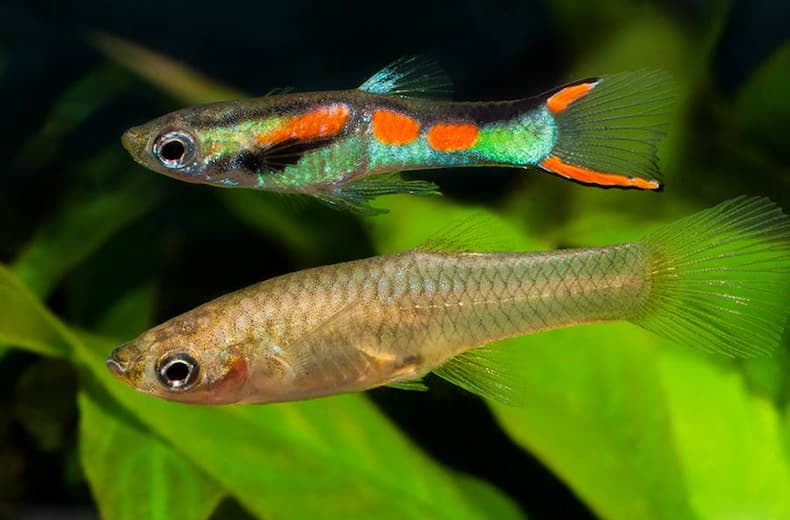
Adult individuals reach a length of 2-4 cm. Males are smaller, grow no more than 3 cm. They have a bright mottled color with a combination of green, red, orange, silver shades. Females are noticeably larger, but completely inexpressive in their coloration. Primary colors are grey.
Food
Undemanding to the composition of food. Accepts most popular suitable sized foods for aquarium fish. The basis of the diet may consist exclusively of dry products in the form of flakes, granules containing plant components. Live and frozen brine shrimp, daphnia, bloodworms will be a good addition.
Maintenance and care, arrangement of the aquarium
A relatively small aquarium of 40 liters can be home to a fairly large population of Endler Guppy, numbering more than ten individuals. The content is very simple. From the aquarist, you only need to ensure the appropriate hydrochemical composition of the water and carry out regular maintenance. It includes the weekly replacement of part of the water with fresh and timely waste disposal (feed leftovers, excrement). The design is arbitrary and completely depends on personal preferences. The basic aquarium will be a regular three-liter jar with a few aquatic plants and a simple airlift filter with a sponge.
Behavior and Compatibility
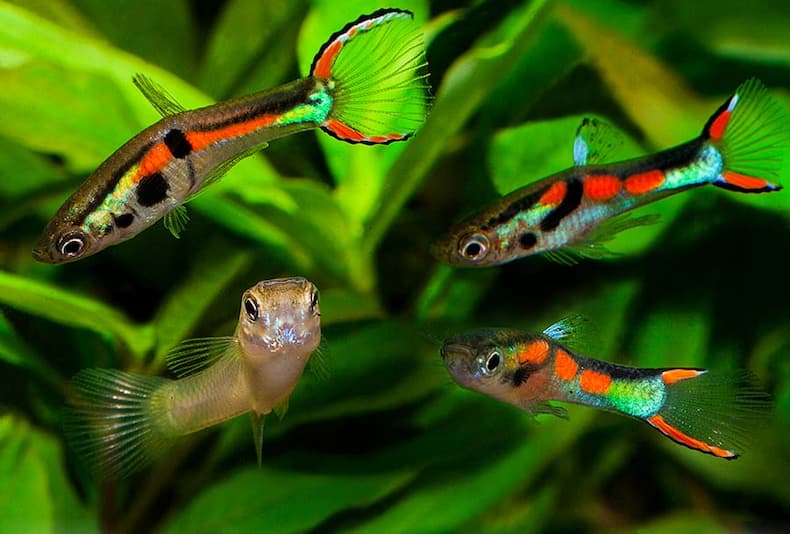
Active peaceful fish. Males are in constant motion, competing with each other for the attention of females. The latter, in turn, tend to show territorial behavior and are not too friendly to rivals, therefore, in a small volume, in the same three-liter jar, it is advisable to keep only one female in company with males. Given their modest size, they are only compatible with the same miniature species. Any large fish will consider guppies as potential food.
Breeding / breeding
An extremely prolific species. A new generation can appear almost every month. They do not spawn, the development of fertilized eggs occurs in the body of females and already fully formed fry are born, from 5 to 25 in each brood. Juveniles are large and will feed on dry food, such as crushed flakes or granules, and may also take Artemia nauplii, Daphnia. Parents, as a rule, do not eat their offspring, but for safety they should still be moved to a separate tank.
High breeding frequency often leads to relocation. The only way to limit permanent spawning is to remove the females, leaving only the males.
Fish diseases
An amazingly hardy fish. The manifestation of diseases can only be provoked by prolonged exposure to an unsuitable environment and / or injury. If the first symptoms of the disease are noted, for example, lethargy, refusal of food, body deformation, etc., the first step is to check the main indicators of water (pH / GH) and the presence of dangerous concentrations of nitrogen cycle products. Habitat restoration usually results in better fish well-being. One, if the symptoms of the disease persist, medical treatment will be required. Read more about symptoms and treatments in the Aquarium Fish Diseases section.




